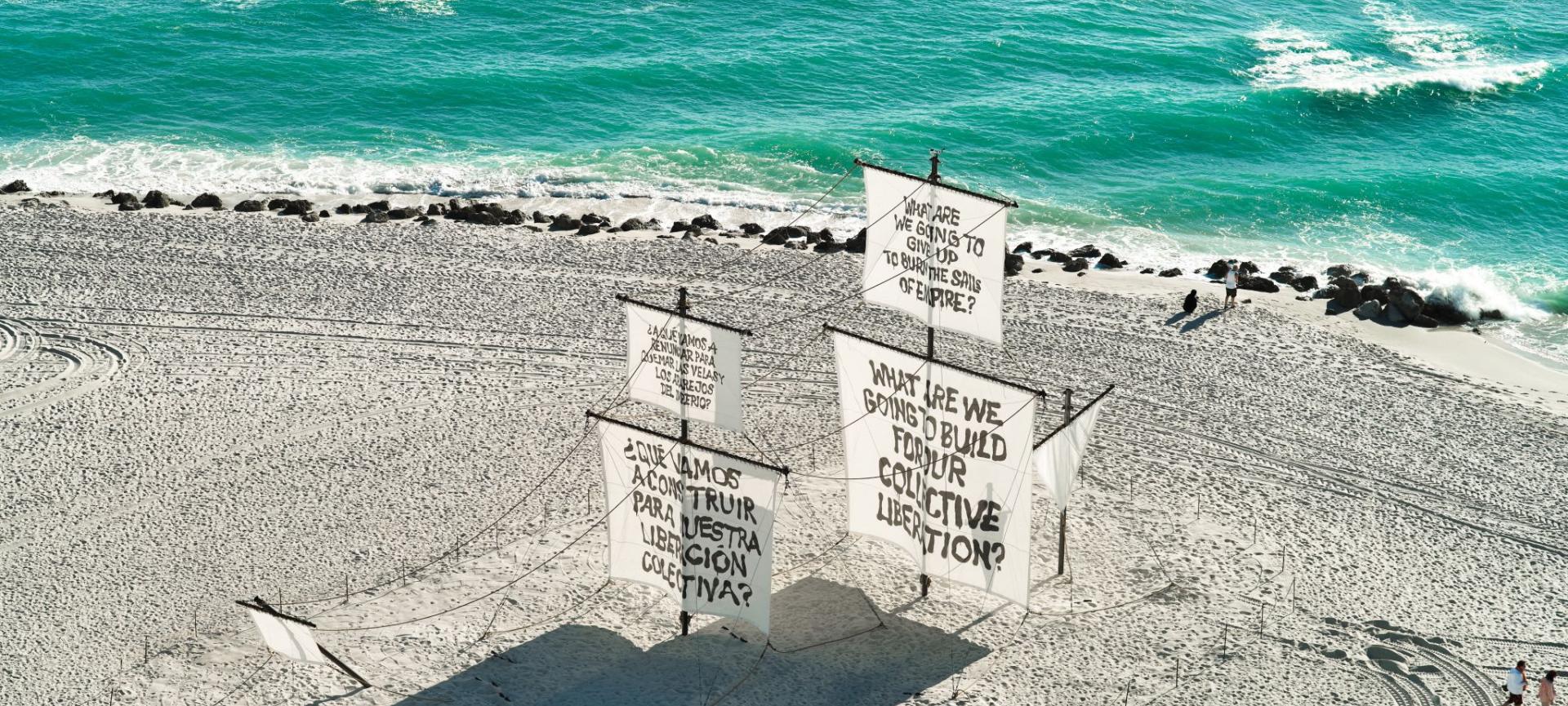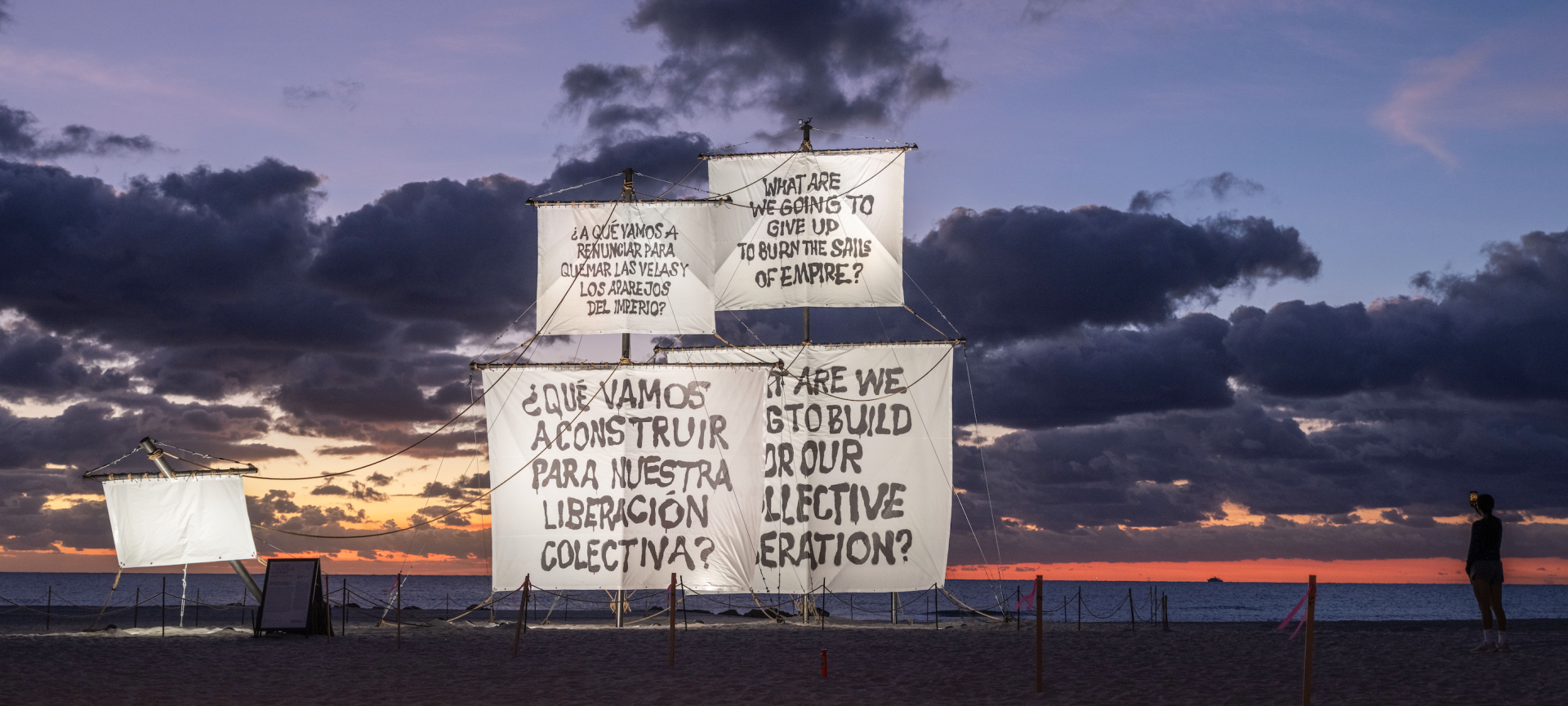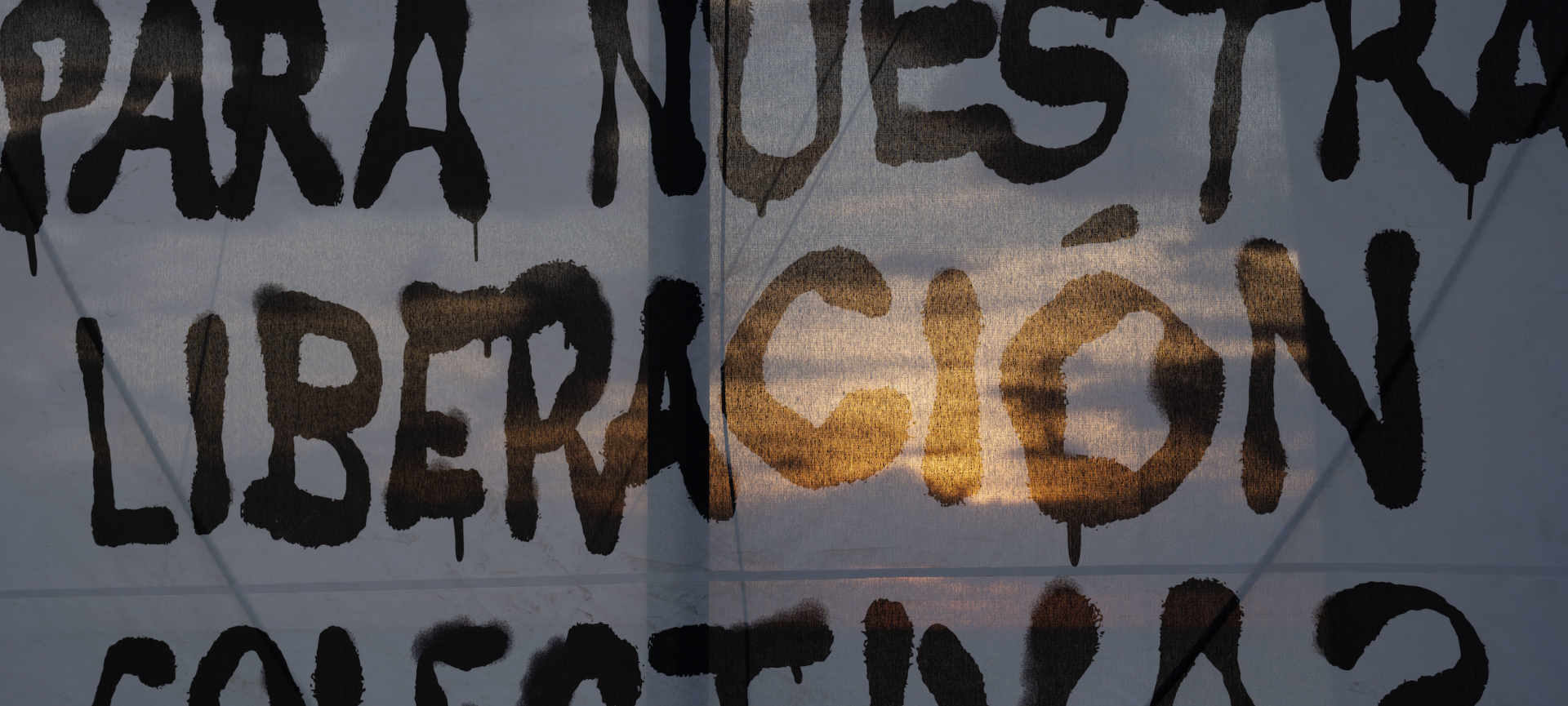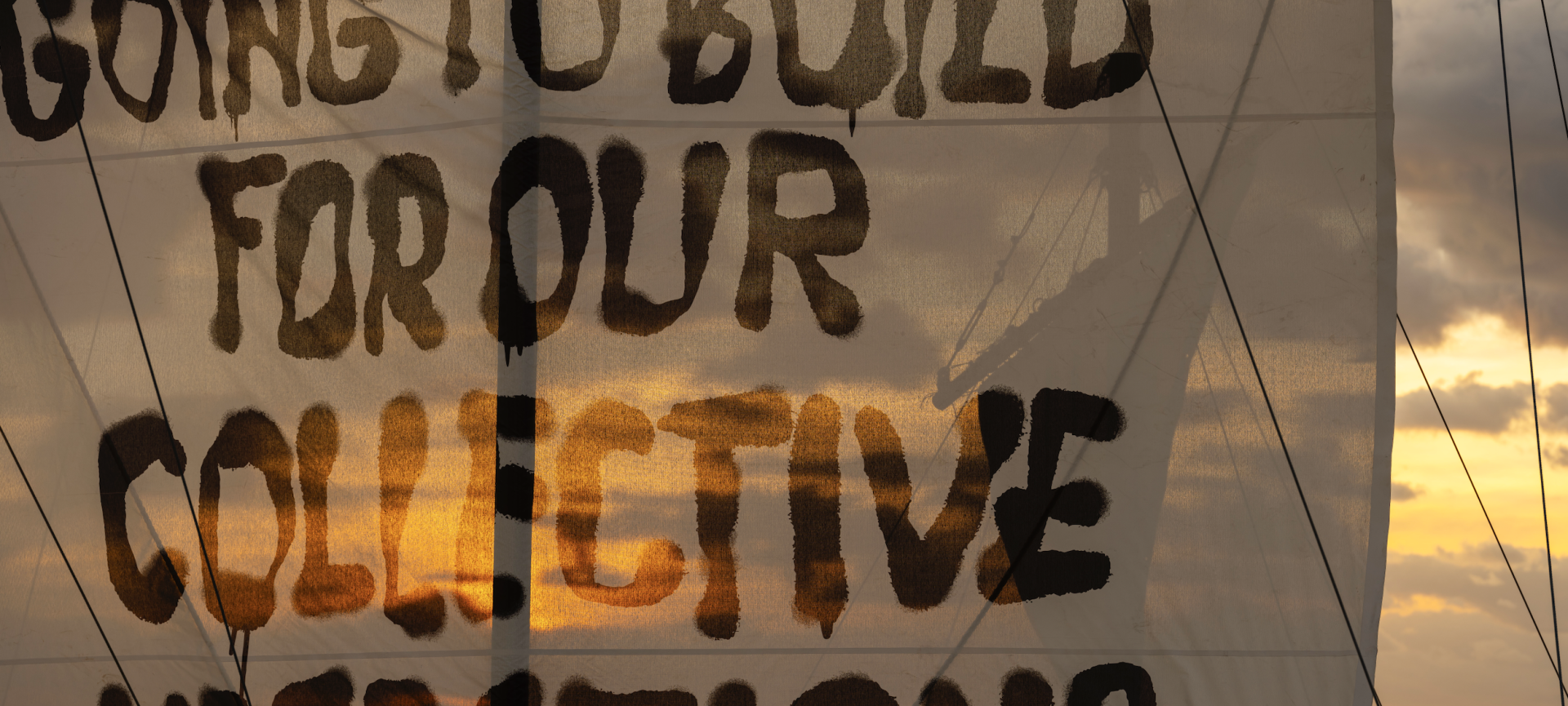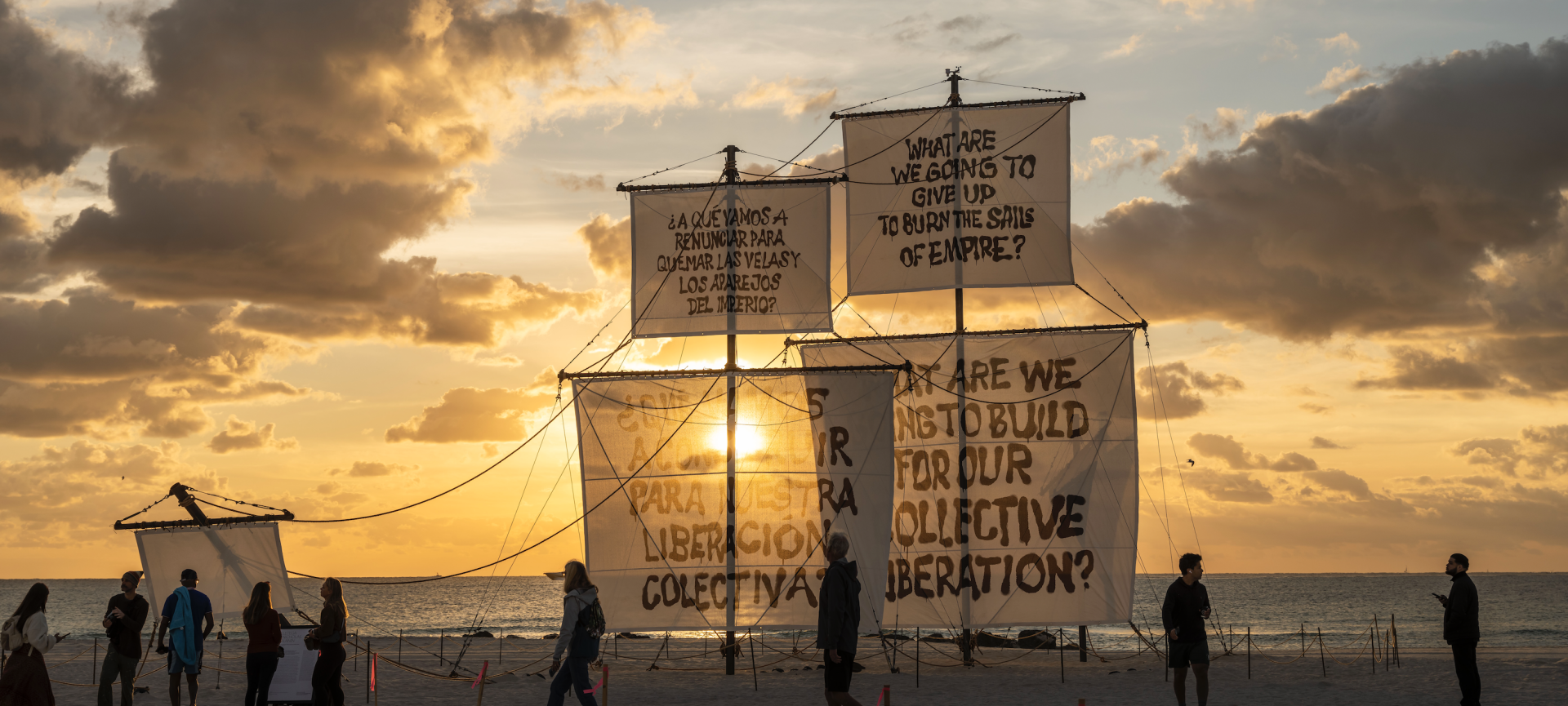SELETEGA
A LARGE-SCALE SITE-SPECIFIC COMMISSION BY
NICHOLAS GALANIN
Seletega (run, see if people are coming/corre a ver si viene gente)
Faena Beach, December 3 - December 8, 2024.
Partially buried on the sands of Faena Beach, Tlingit/Unangax artist Nicholas Galanin presented a monumental site-specific installation, Seletega (run, see if people are coming/corre a ver si viene gente), in the form of a Spanish galleon’s masts, sails, and rigging emerging from under the sand. The work by Galanin rise over forty feet in height, tying the occupation of Indigenous Land to the initial invasion of the “Americas” to extract wealth for European aristocracy. In 1519, Cortés led a Spanish expedition to Mexico and ordered his ships to be scuttled. This was done to motivate his crew, who were exhausted after the long journey and to prevent them from retreating or joining forces with an enemy. Cortés's actions sent a clear message to his men: there was no turning back. The Spanish expression quemar las naves (burn the ships) means to eliminate the possibility of retreating before a problem.
The masts and sails of the galleon in this work evoke a decisive moment, symbolizing a point of no return, where past actions force a commitment to a new, uncertain future. This act, like burning one’s ships, speaks to the irreversible choice to move forward without the option of retreating, of charting a new course and never going back and the act of giving oneself to a cause or belief.
Spray painted on the sails in Spanish and English (the first languages to colonize the Americas): “What are we going to give up to burn the sails of empire? Qué vamos a renunciar para quemar las velas y los aparejos del imperio? What are we going to build for our collective liberation? Qué vamos a construir para nuestra liberación colectiva?” These questions, marked on the sails, speak to past and present, asking visitors to consider their roles and responsibilities in shaping the future. Just as the ships were burned to make retreat impossible, the work asks us to reflect on what we must let go of to move towards collective liberation.
Galanin’s work engages deeply with social issues, particularly those impacting Indigenous communities, inviting dialogues between Indigenous and non-Indigenous experience.
ABOUT THE ARTIST
Nicholas Galanin’s sculptures and multimedia installations reflect his heritage as a Tlingit and Unangax̂ artist while confronting colonial violences, including the ongoing exploitation of Indigenous culture. Asserting Indigenous autonomy and agency, his works often critique the spaces they inhabit. His contribution to the 2020 Biennale of Sydney, Shadow on the Land, dug a monumental grave for colonizer Captain James Cook; for the 2021 Desert X exhibition in California, Galanin erected the phrase “INDIAN LAND” in highly visible letters on Cahuilla ancestral territory and has participated in the 2017 Venice Biennale. Nicholas Galanin earned a BFA at London Guildhall University (2003), an MFA at Massey University, Palmerston North, New Zealand (2007), and apprenticed with master carvers and jewelers. He currently lives and works with his family in Sitka, Alaska. Galanin participated in Desert X, Palm Springs (2021); Biennale of Sydney (2020); Venice Biennale (2017); Whitney Biennial (2019); and Honolulu Biennial (2019). Galanin’s work is in permanent collections including The Museum of Modern Art, New York; Whitney Museum of American Art, New York; Philadelphia Museum of Art; Art Institute of Chicago; Detroit Institute of Arts; The National Gallery of Canada, Ottawa; The Museum of Fine Arts, Houston; Denver Art Museum; Los Angeles County Museum of Art; and Princeton University. He received an award from American Academy of Arts and Letters (2020) and received a Soros Arts Fellowship (2020).


